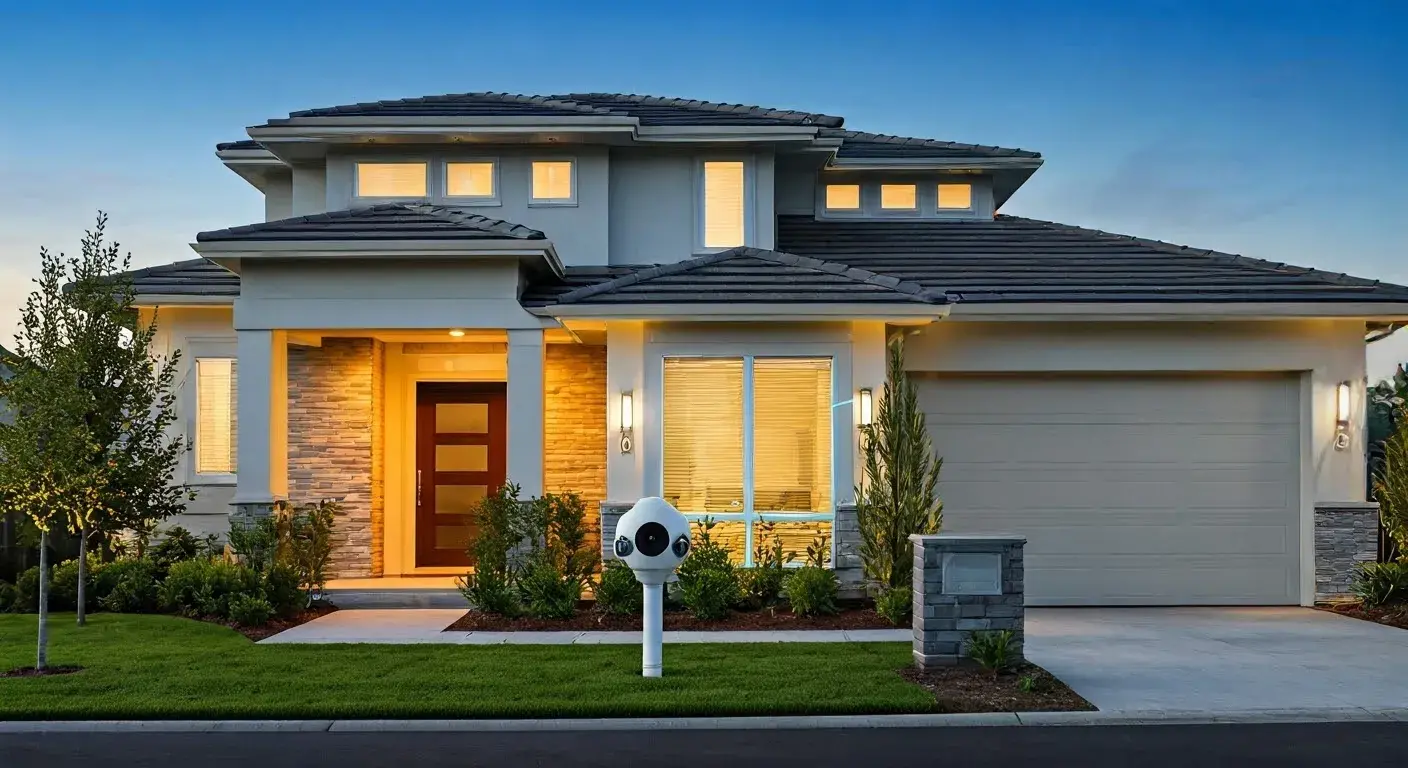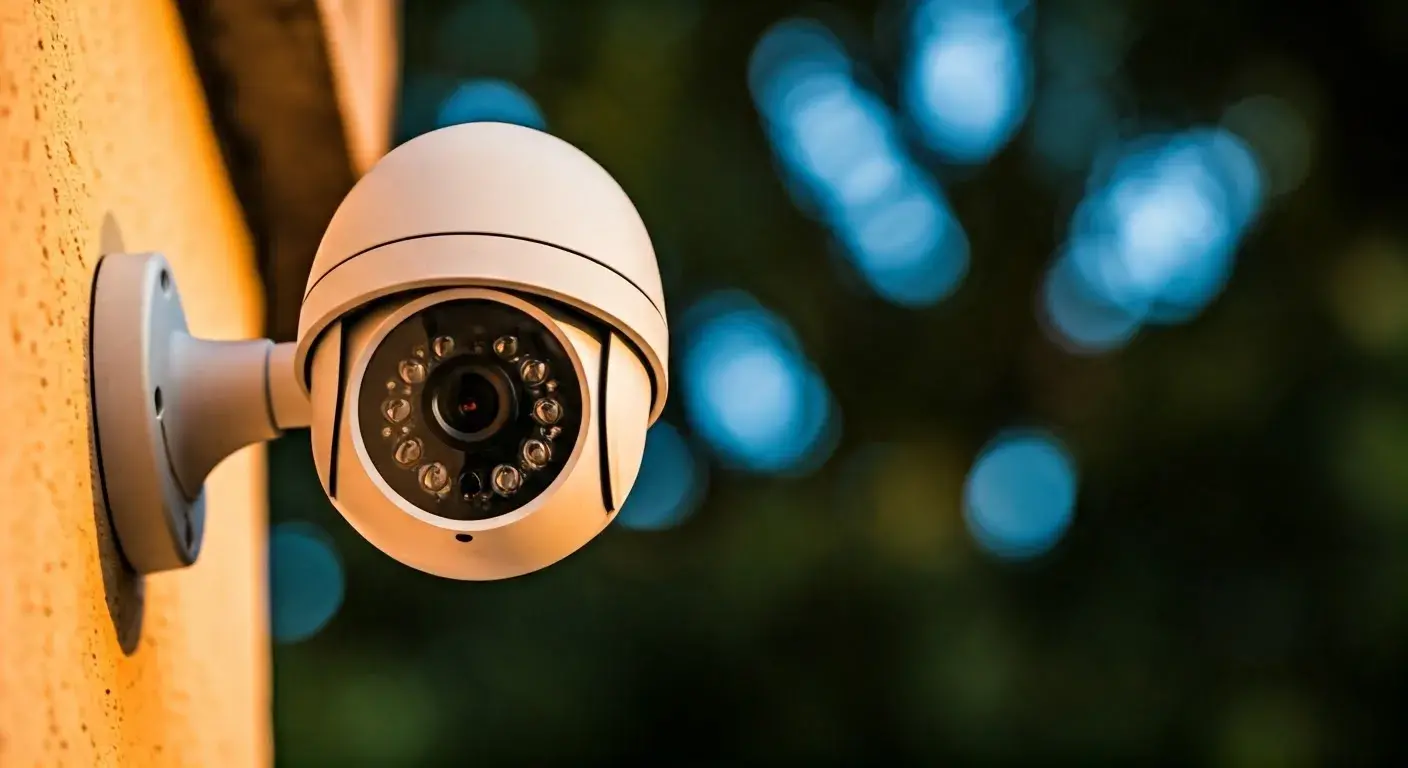In today's digital world, DIY home security systems are popular for protecting our families and possessions. These systems use smart home devices and easy-to-use technology to give homeowners a complete security solution. By allowing people to manage their home security, DIY systems provide a great alternative to traditional systems that need professional installation.
Understanding DIY Home Security Systems
DIY home security systems are like tools to help keep your home safe. They give you control, allowing you to set up the system based on what you need and how much you want to spend. But what does "going DIY" mean for your security?
In simple terms, DIY home security systems lets you install and often watch over your own system. This way, you don’t have to make appointments with experts or sign long contracts.
What Is a DIY Home Security System?
DIY systems are like personal security guards for your home that you can customize. They usually have different sensors, cameras, and a main hub that connects everything. The best part about these systems is that you can start small, maybe with just a few door sensors and one camera. Then, you can add more as your needs change or as your budget allows.
What makes DIY systems special is how easy they are to use. They are designed for the average homeowner, so anyone can set them up without any special skills. Most DIY systems work wirelessly using your home's Wi-Fi to talk to each other and, if you want, a professional monitoring service.
You can easily control and keep an eye on your DIY home security from your smartphone or tablet using the SimpliSafe app. This gives you peace of mind anywhere you go. You can get quick alerts about unusual activities, arm or disarm your system remotely, and even watch live camera feeds right from your hand.
Benefits of Going DIY with Your Home Security
One big advantage of DIY home security systems is that they can save you money. Unlike traditional systems that require professional installation, DIY options often have lower costs upfront. They also offer flexible subscription plans without long term contracts, and you can even skip paying monthly fees completely.
Another benefit of DIY systems is how customizable they are. You're free to pick the tools that fit your home's security needs. This can include motion sensors for certain areas, door and window sensors, security cameras, and even extra safety items like smoke detectors and carbon monoxide alarms.
If you enjoy having a connected home, many DIY systems work well with popular smart home platforms like Google Home and Apple HomeKit. You can easily arm your security system, dim the lights, and lock the doors using just your voice.
Key Components of DIY Home Security Systems
Many DIY home security systems have similar parts, even if the exact items change based on the brand and package you pick. Knowing these basic parts will help you make good choices when creating the right security setup for your home.
The main part of any DIY system is the central hub. This hub is often called the "brain" of the system. It acts as the main spot for communication between all your security devices. It gets signals from sensors and cameras and then sends them to your smartphone or tablet.
The Central Hub: Brain of Your System
The central hub is a small and hidden unit that connects your DIY security system to your smart home and the outside world. It gets information from different sensors and cameras around your house. Then, it processes this information and sends you important notifications through a smartphone app, text messages, or emails.
This hub acts as the main station for your system. It usually connects to your home’s Wi-Fi router. This connection lets you control and monitor your security system from almost any location. Some advanced hubs also have a built-in cellular backup, which keeps your system connected during power outages or internet issues.
As smart homes improve, central hubs are evolving too. Many now work as a control center for other smart home devices, like smart locks, thermostats, and lighting systems. This way, you can automate more of your home security and enjoy a very connected living space.
Sensors and Detectors: Your First Line of Defense
Sensors are like the watchful guards of your home. They keep an eye out for anything unusual happening. Placed around your property, they form an important first line of defense against possible intruders.
Here are some common types of sensors you can find in DIY security systems:
-
Motion sensors: These smart devices spot movement nearby. They trigger an alarm or send a message to your smartphone if something isn’t right.
-
Window sensors: These come in two parts. One part goes on the window frame and the other on the window. If someone tries to open the window, it breaks the circuit and sets off the alarm system.
-
Door sensors: Just like window sensors, door sensors help watch over entry and exit points.
Cameras: Eyes When You’re Not There
Sensors are good at spotting intrusions, but security cameras let you see what's happening in real time. Indoor cameras boost security by letting you check on your home, pets, or loved ones while you are away.
Outdoor security cameras let you watch what is happening outside your home. These cameras can handle bad weather and keep an eye on your property. This acts as a warning to potential intruders. With features like night vision and motion-triggered recording, you can gather evidence if something happens.
Many DIY systems come with cloud video storage. This lets you access recorded videos from anywhere. Basic plans may offer limited storage, while premium plans usually provide more space and a longer history of videos.
Step-by-Step Guide to Choosing Your DIY Home Security System
Choosing a DIY home security system can seem hard with so many choices. But it doesn’t have to be tricky. If you take a step-by-step approach, you can simplify your options and find the right fit for your home, lifestyle, and budget.
Begin by honestly looking at your home’s security needs. Do you live in a neighborhood with high crime, or are you mostly worried about fire safety? Are there certain places on your property that need more attention? The answers to these questions will help you make your decision.
Assessing Your Home’s Security Needs
Start by walking around your home, both inside and outside. Look for possible entry points, places with valuable items, and any security weaknesses. Is your front door weak and easy to break? Are there places in your yard where someone could hide?
Think about your daily life and habits. Do you have pets that might set off motion sensors? Do you travel a lot, so you might need remote monitoring or even professional monitoring with police response and emergency services? Considering these things will help you figure out how much security you need.
Also, remember fire safety and other risks. Many DIY home security systems can work with smoke detectors, carbon monoxide alarms, video doorbells, and water leak sensors. Checking your weak spots in these areas will help keep your home safe from more than just intruders.
Compatibility with Smart Home Devices
In today's world of connected devices, you want your security system to work well with others. If you use an iPhone, check if it works smoothly with Apple HomeKit. If you're an Android user, see if it connects to Google Home.
Connecting to other smart home devices can boost your security. For example, a smart lock lets you unlock your front door remotely for a trusted neighbor if they need to look in while you are away. You can also set your system to arm itself when you leave and disarm when you come back, using geofencing on your smartphone.
Always remember, a good, smart security system fits into your life. It should make your life easier and safer, not more complicated.
Installation: Simplified Steps for Homeowners
One of the best things about the best DIY home security systems is how easy it is to set up. You no longer need to drill holes in your walls or run wires through your attic. Most DIY systems can be ready to use in just a few minutes, not hours.
With wireless technology and simple instructions, the setup process for your ADT ADTself-setupp system is often very easy. All you need to do is connect your central hub to power and your Wi-Fi router. Then, download the smartphone app and follow the steps shown on your screen. Many DIY home security providers also offer helpful video tutorials to guide you through each step.
You can handle everything from putting sensors on doors and windows to placing cameras for the best coverage. Most homeowners with basic skills can do this. And if you face any issues, online support forums and customer service are available to help you.
Top Picks for DIY Home Security Systems in the Market
The market has many choices, each with different features and prices. To make your decision easier, let’s explore some popular options based on your budget and technology comfort level.
If you are looking for something affordable, there are good brands that provide budget-friendly solutions. These systems have key features to keep your home safe and secure, while still being easy on your wallet.
Budget-Friendly Options for Starters
When thinking about home security, you don't need to pay a lot to find a good system. Many lower-priced options offer great value. They provide important features without breaking the bank. These systems are great for homeowners who want to feel safe without spending too much.
A great option for those on a budget is the Ring Alarm system. This system has a good starting price. It includes various parts, like a base station, contact sensors, a motion detector, and a keypad. You usually get basic self-monitoring, but you can choose professional monitoring plans for a small monthly fee, making it a professionally monitored system if you want that.
Another good option is the SimpliSafe security system. This system is easy to set up and has a handy app. SimpliSafe offers different packages to meet different needs.
Systems with Advanced Features for Tech-Savvy Users
For tech-savvy homeowners who want the best features and easy integration, there are many premium DIY home security systems. These systems have the latest in home security technology. They offer a connected and customizable experience.
One popular option is the Ring Alarm Pro. This system has top security features and a built-in Eero Wi-Fi 6 router. With this, you get great security and fast Wi-Fi speeds throughout your house.
Another choice is the Abode Smart Security Kit. It works well with connected devices like Google Home. This smart security kit can turn your home into a smart home. You can easily control your lights, thermostat, locks, and security system, all from one app.
Integration with Smart Home Ecosystems
Your DIY security system can play a key role in your smart home. It works well with platforms like Google Home or Apple HomeKit. This brings you easier automation and comfort.
You can control your security system just by using your voice. You could also set your lights to turn on automatically if a sensor sees something strange. Smart home integration improves your home security a lot.
Enhancing Security with Smart Home Automation
Integrating your DIY home security system with smart devices can improve your security and make your daily life easier. Imagine if your security system notices suspicious activity at your front door. With smart home automation, it could turn on your outdoor lights automatically, which might scare off any intruders.
You can also create schedules that fit your lifestyle. For instance, you can set your door to lock on its own when you leave home. You can adjust the thermostat depending on if you’re home, or program your lights to turn on and off at certain times to make it look like someone is home.
Smart home automation turns your security system into a strong protector. It works in the background to keep your home safe at all times.
Popular Home Automation Platforms and Compatibility
Several popular platforms seamlessly integrate with a wide range of smart home devices, including DIY home security systems. Here’s a quick look at some widely used options:
-
Google Home: Easily manage compatible smart devices from various brands using voice commands or the intuitive Google Home app. From adjusting your thermostat to arming your security system, Google Home simplifies controlling your connected home.
-
Apple HomeKit: For Apple enthusiasts, HomeKit offers a robust platform to control and automate compatible smart home devices. Use Siri voice commands on your iPhone, iPad, or HomePod to manage your security system effortlessly.
-
Amazon Alexa: Known for its vast device compatibility, Alexa allows you to create routines and control a wide range of smart home gadgets, including your DIY security system. With simple voice commands or the Alexa App, managing your smart home is a breeze.
Maintenance and Upkeep of Your DIY Home Security System
DIY home security systems make it easier to manage compared to traditional ones. However, it is important to check your system regularly to keep it working well.
Like any electronic device, your DIY security gear needs some care to work at its best. The great thing is, these tasks are usually simple and can fit right into your home maintenance routine.
Routine Checks to Ensure System Efficiency
Maintaining your DIY home security system is not hard and does not need special tools. Simple checks can help keep your system running well. One important step is to test your system regularly.
Make sure to test every sensor and detector. This includes motion sensors, window sensors, and door sensors. Check the camera lenses too. Look for smudges or anything that can block their view. Many systems have a test mode to help you check each part and see if it is working.
Also, check your system’s battery backup. Most DIY systems have backup batteries to keep things running during power outages. Change these batteries regularly, as the manufacturer suggests.
Troubleshooting Common Issues
Even the best home security systems can have issues from time to time. Fortunately, DIY home security systems are easy to use. You can solve many problems with just a bit of troubleshooting.
One common issue is false alarms. If your system often goes off without a clear reason, check where your sensors are placed and how sensitive they are. Make sure motion sensors are in good spots and change their sensitivity settings if they pick up too much movement.
If problems keep happening or you can’t fix something on your own, reach out to your security provider's customer support team. Most DIY home security companies provide good customer support, like phone, email, or online chat, to help you with any technical problems or questions.
Conclusion
Choosing the right DIY home security system is very important for keeping your home and family safe. To make a good choice, you should know the benefits, parts, and how it works with smart home systems. It is also important to check if it works well with your smart home devices. Regular maintenance will help keep the system running well. Whether you choose an affordable option or a more sophisticated one, make sure it is easy to install. Look at the best choices available and find a DIY home security system that meets your needs and fits your technology style. Start improving your home security today!






